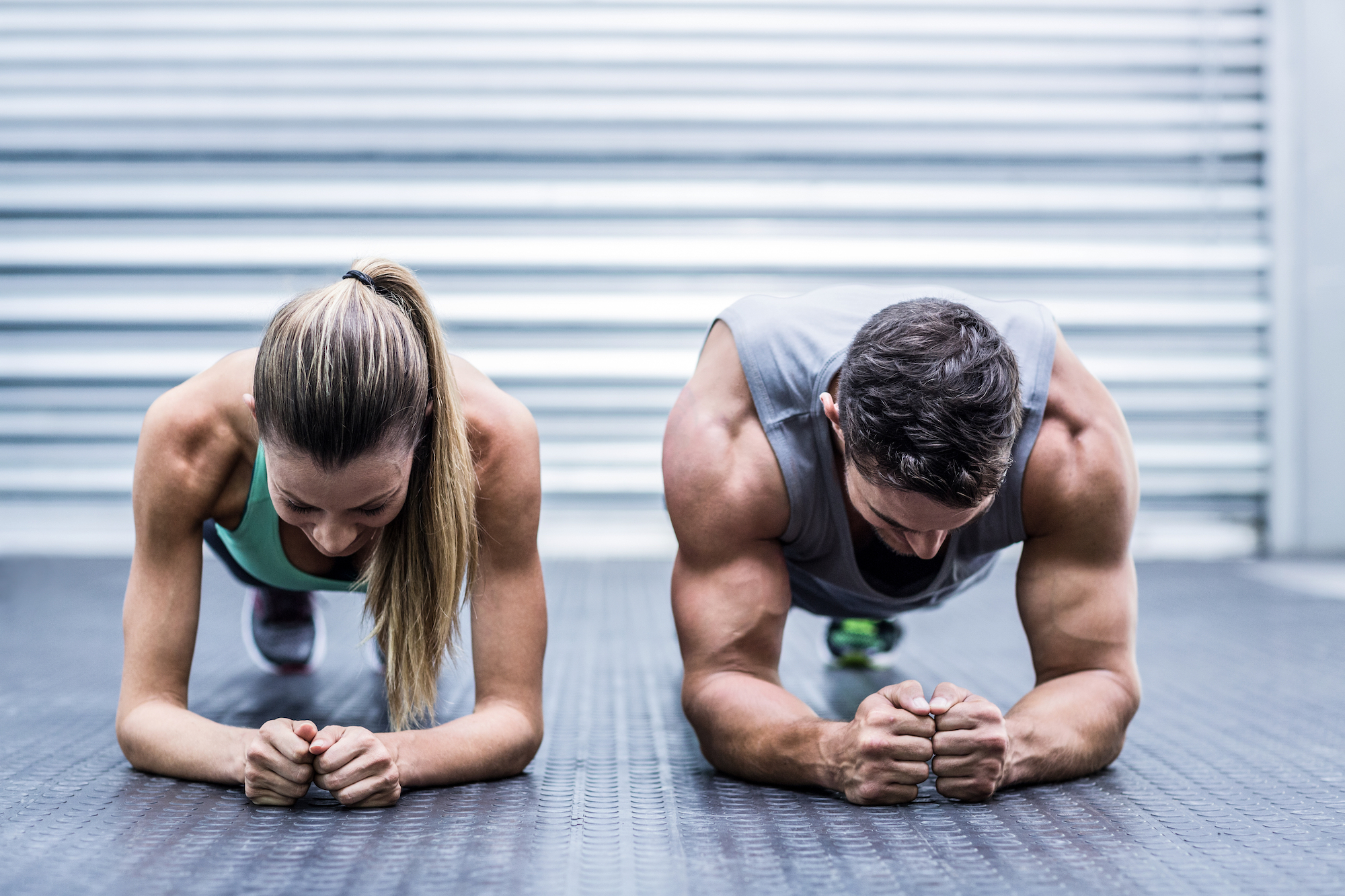How to do an up-down plank: correct form, benefits, and modifications
Here’s how to do an up-down plank with the correct form

Finding an exercise that gets you more bang for your buck is like hitting a jackpot, and if it's bodyweight—AKA requiring no equipment other than your body—you're onto a winner. One exercise we love that falls under this category is the up and down plank, also known as a commando plank or moving plank.
An up and down plank is as simple as it sounds, you move from a high plank to a low plank, and repeat. Simple it may sound, but it definitely will ignite a burn in your core as well as your triceps, shoulders and lower back. As you brace yourself in the plank position you will also engage your quads and glutes.
But to make sure all the right muscles are being activated, and to build strength and definition in these areas, you'll need to master the correct form of this move. That's why we've covered below how to do an up and down plank, including how to do modifications of the exercise.
If you need to learn about a first-hand experience with this exercise you can read up on what happened when I added a plank to my morning routine here.
How to do up and down planks
- Get into the plank position on an exercise mat (if you don’t have one, we’ve found the best yoga mats that double as exercise mats here)
- Keep your palms flat on the floor, with your arms straight and hands beneath your shoulders
- Brace your core as you drop your left elbow down to the ground, followed by your right. You should still be in a plank position, with your weight on your elbows
- Pause here, then press your left palm into the floor, and rise back up to a high plank position.
During this exercise, it’s important to keep the movement slow and controlled. As tempting as it is to power through the repetitions to get them done, you’ll work harder if you move slower. It’s also important to keep your core engaged during the movement and to avoid swinging your pelvis from side to side as you move.
What are the benefits of up-down planks?
As up and down planks target different muscle groups in the body, they are likely to get your heart rate up more than, say, a traditional plank. This means the exercise is likely to burn more calories than other ab exercises.
As a full-body, bodyweight exercise, up and down planks work your arms and core. A stronger core has a number of benefits that aren’t just aesthetic, including lifting heavier, running faster, and having a better posture. Working your arms helps sculpt more visible muscles, but also reduces your risk of injury in the gym, improves your posture, and helps you run faster.
Sign up to get the BEST of Tom's Guide direct to your inbox.
Get instant access to breaking news, the hottest reviews, great deals and helpful tips.
The best up-down plank modifications to try
If up and down planks are too difficult right now, start by building your strength in a regular high plank. Once you have mastered that move, try to hold a plank for a minute, but after 30 seconds move from a high plank to an elbow plank — this will get you used to the movement. Of course, you can also start with less reps — aim for two up and down planks on each arm, and build up from there.
If ten up and down planks is now easy, add more repetitions to your workout to really blast your arms and core. If you’re looking for harder plank modifications, you might also want to add weights to the movement.
Instead of moving down into an elbow plank, add a row to the movement — to do this, get into an elbow plank position, with a dumbbell in each hand, or if this is too much on your wrists, place a dumbbell by each hand. Starting with your left hand, reach for the dumbbell and perform a row, bending at the elbow. Drop the dumbbell back to the starting position, and repeat on the opposite side. You can then finish with a push-up to really up the ante. Beginners, aim to complete five reps.

Jane McGuire is Tom's Guide's Fitness editor, which means she looks after everything fitness related - from running gear to yoga mats. An avid runner, Jane has tested and reviewed fitness products for the past five years, so knows what to look for when finding a good running watch or a pair of shorts with pockets big enough for your smartphone. When she's not pounding the pavements, you'll find Jane striding round the Surrey Hills, taking far too many photos of her puppy.
- Sam HopesSenior Fitness Writer, Fitness and Mobility Coach
